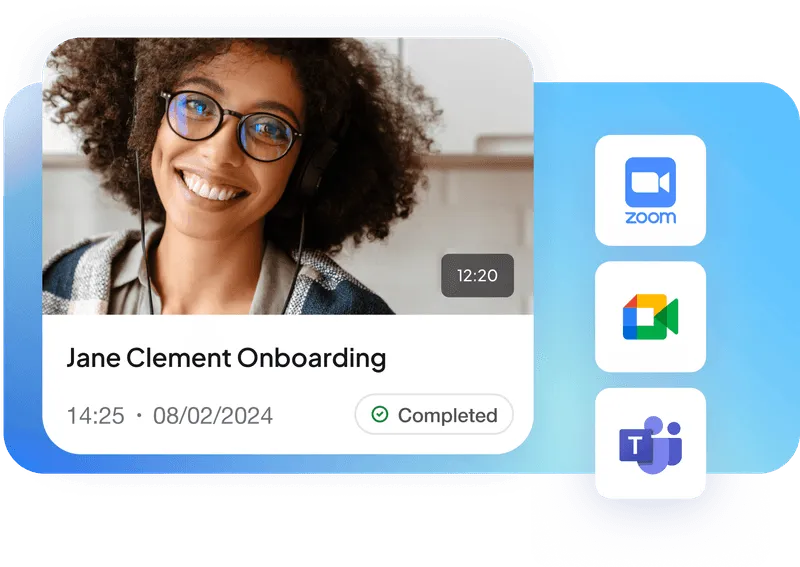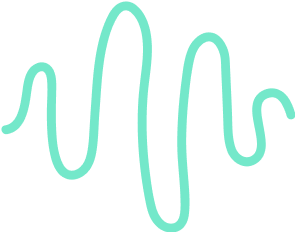Tactiq helps teams handle meeting documentation by offering real-time transcription and AI-generated summaries
However, it isn’t without its limitations, and exploring alternatives could lead you to a better fit for your specific needs.
In this article, we’ll introduce you to some of the best alternatives to Tactiq.
Why Consider Alternatives to Tactiq
Tactiq is well-regarded for its ease of use, real-time transcription, and AI-generated summaries, particularly for meetings on platforms like Zoom, Google Meet, and Microsoft Teams.
However, there are several reasons you might want to explore alternatives :
- One common concern is cost—many users find that accessing premium features can be expensive, particularly for small teams or individual users. While Tactiq’s free version offers some functionality, it is limited to a specific number of meetings, which may not be sufficient for teams with higher demands.
- The dependency on a stable internet connection is another potential drawback, as the platform requires a good connection for real-time transcription to work effectively.
- In some cases, users have also reported minor transcription errors, especially when dealing with heavy accents or background noise.
5 Best Meeting Recorder Alternatives to Tactiq

1. Noota
Noota is an all-in-one solution for recording and transcribing meetings in real time, allowing users to focus fully on conversations without the distraction of taking notes. Its seamless integration with platforms like Zoom, Microsoft Teams, and Google Meet ensures that it fits smoothly into existing workflows. With highly accurate speech recognition, particularly in French, Noota supports over 50 languages, making it an ideal tool for international teams and multilingual meetings.
Pros:
- Accurate transcription with support for over 50 languages.
- Seamless integration with major platforms like Zoom, Teams, and Google Meet.
- High-level security with double encryption and GDPR compliance.
Cons:
- Some features may require a learning curve.
- Customization may be needed to fully utilize its advanced capabilities.
Price:
- Free and paid plans available, with premium pricing starting around €20 per user per month.
2. Chorus.ai
Chorus.ai is another excellent alternative to Tactiq, especially for sales teams and organizations that require conversation intelligence. Chorus doesn’t just record and transcribe meetings; it analyzes conversations and provides actionable insights into team performance. By tracking metrics like sentiment, talk time, and engagement, Chorus.ai helps improve communication strategies and identify areas of improvement.
Chorus.ai also integrates with popular platforms like Zoom and Salesforce, making it a valuable tool for sales teams who need to review conversations and extract insights from customer interactions. However, its deep analytics may feel overwhelming for smaller teams or those who don’t require such detailed reports.
Pros:
- Advanced conversation intelligence with sentiment and engagement tracking.
- Seamless integration with Zoom, Salesforce, and other major platforms.
- Provides actionable insights to improve team communication.
Cons:
- Its in-depth analytics may be more than what small teams need.
- More expensive compared to other meeting recorders.
Price:
- Custom pricing available based on team size and features needed.
3. Reason8
Reason8 is designed for in-person meetings, making it a unique alternative to Tactiq for teams who meet face-to-face. Its powerful voice recognition system identifies different speakers, creating highly accurate transcripts that are useful for group meetings or brainstorming sessions. Reason8 also works well in hybrid settings, where some participants are virtual and others are in the room.
While Reason8 is highly effective for in-person meetings, its limited integrations with video conferencing platforms might make it less suitable for fully remote teams.
Pros:
- Excellent for in-person or hybrid meetings with strong speaker identification.
- Accurate transcription, even in environments with multiple speakers.
Cons:
- Limited integration with online video platforms.
- Best suited for teams that meet face-to-face or in hybrid setups.
Price:
- Free plan available, with paid plans starting at $19.99 per user per month.
4. Superpowered
Superpowered provides a simple yet effective solution for teams needing quick, accurate meeting recordings. This tool excels in capturing audio from conversations and turning it into easily navigable transcripts. What sets Superpowered apart is its ability to transcribe and organize these meetings into searchable documents, making it easy for users to quickly retrieve key information.
Superpowered is ideal for users looking for a streamlined tool without too many extra features. However, teams needing more advanced functionality, such as speaker identification or task automation, may find Superpowered a bit limiting.
Pros:
- Simple and effective transcription of audio from meetings.
- Searchable transcripts make it easy to find key points quickly.
Cons:
- Lacks advanced features like speaker identification or task automation.
- May not be sufficient for teams with complex meeting needs.
Price:
- Free forever plan available, with pro plans starting at $20 per user per month.
5. CaptionSaver
For those who frequently use Google Meet, CaptionSaver is a straightforward solution that automatically saves live captions from meetings. This tool works as a Chrome extension, making it easy to install and use. It captures captions in real time and allows users to download them in text format after the meeting.
While CaptionSaver is extremely useful for users of Google Meet, its functionality is limited compared to other transcription tools, as it focuses solely on captions rather than full meeting transcriptions or insights.
Pros:
- Simple and easy-to-use Chrome extension for Google Meet users.
- Automatically saves and downloads meeting captions.
Cons:
- Limited to Google Meet and basic captioning functionality.
- Doesn’t provide full meeting transcripts or additional insights.
Price:
- Starts at $39 for the paid version.
5 Best AI Meeting Note-Taker Alternatives to Tactiq

1. Noota
Noota is a versatile, all-in-one AI-powered note-taking tool designed to handle the complexities of documenting meetings, whether they are team discussions, client calls, or interviews. One of Noota's key strengths is its ability to automate recording and real-time transcription, allowing you to focus on the conversation without worrying about capturing every detail. This tool offers customizable meeting minutes templates to suit different types of meetings, ensuring that the documentation is relevant, well-organized, and easy to understand.
Pros:
- Highly accurate multilingual transcription.
- Robust integration with ATS, CRM, and collaboration tools.
- Strong data privacy and security standards, ideal for enterprise use.
Cons:
- Some users may experience a learning curve with its advanced features.
- Customization is often necessary to fully leverage its capabilities.
Price:
- Free version available, with premium plans starting at around €20 per user per month.
2. Noty.ai
Noty.ai is an AI-driven meeting note-taker that focuses on real-time transcription and efficient collaboration. It offers a collaborative platform where users can not only transcribe but also edit and annotate meeting notes during or after a meeting. One of its standout features is its ability to capture Google Meet chats alongside meeting notes, ensuring that every piece of information is preserved.
Pros:
- Editable transcriptions that support real-time collaboration.
- Seamless integration with popular platforms like Zoom and Google Workspace.
- AI-powered action item detection and summaries.
Cons:
- Limited to online meetings and lacks support for offline transcription.
- The user interface may require some time to adapt.
Price:
- Free version available; paid plans start at around $12 per user per month.
3. Scribe
Scribe offers AI-powered transcription and note-taking, focusing on simplicity and speed. It enables users to capture key meeting moments and automatically organizes notes into structured formats. Scribe’s interface is easy to use, and it offers real-time note generation during meetings, helping professionals keep track of important action points and follow-ups.
What sets Scribe apart is its ability to highlight crucial moments during a meeting, which can be incredibly useful for reviewing key takeaways without revisiting the entire meeting transcript. It’s an excellent option for busy professionals who need fast, accurate note-taking.
Pros:
- Easy-to-use interface with real-time transcription and note-taking.
- Highlights important moments during meetings for easy review.
- Supports integration with various video conferencing platforms.
Cons:
- Fewer advanced features compared to competitors.
- Limited integration with external business tools like CRMs.
Price:
- Free version available, with premium plans starting at $15 per user per month.
4. Airgram
Airgram is an AI-powered meeting assistant that excels in real-time transcription and automated meeting summaries. It integrates well with Google Meet and Zoom, allowing users to capture and organize meeting notes effortlessly. Airgram also supports customizable templates for different types of meetings, helping teams maintain a consistent structure in their documentation.
Airgram’s automatic highlights and action item detection ensure that teams stay organized and on track after each meeting. The tool also integrates with Notion and Slack, providing a seamless collaboration experience for team members.
Pros:
- Real-time transcription with action item detection.
- Integrates well with Google Meet and Zoom.
- Customizable templates for different meeting types.
Cons:
- Limited offline functionality.
- Free version offers fewer advanced features compared to paid plans.
Price:
- Free version available; premium plans start at $12.99 per user per month.
5. Hypercontext
Hypercontext takes a different approach by combining note-taking with team management tools, offering a comprehensive platform for setting goals and tracking team performance. It enables users to record meeting notes, set goals, and manage action items all within one interface. Hypercontext integrates with popular platforms like Google Meet, Zoom, and Slack, making it easy for teams to stay organized and aligned on key outcomes.
This tool is particularly valuable for teams that need to track goals and performance metrics along with their meeting notes, offering a unique blend of meeting documentation and team management.
Pros:
- Combines note-taking with goal tracking and team management.
- Supports integration with Google Meet, Zoom, and Slack.
- Ideal for teams needing to align meeting outcomes with performance metrics.
Cons:
- May be too complex for teams looking for a simple note-taking tool.
- Customization options are limited for advanced workflows.
Price:
- Free version available; premium plans start at $10 per user per month.

.png)

.svg)
.svg)
.svg)
.webp)


.svg)